Schoenus was an ancient Egyptian, Greek and Roman unit of length and area based on the knotted cords first used in Egyptian surveying.
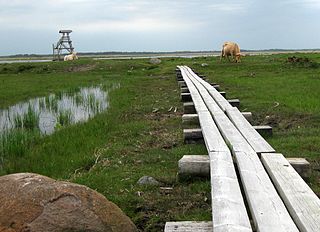
Lake Engure Nature Park is a protected park in Latvia covering 197.62 km2 (76.30 sq mi), named for Lake Engure. It was designated as a nature spot in 1998.
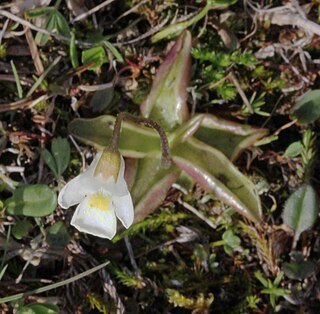
Pinguicula alpina, also known as the alpine butterwort, is a species of carnivorous plant native to high latitudes and altitudes throughout Eurasia. It is one of the most widespread Pinguicula species, being found in mountainous regions from Iceland to the Himalayas. Native to cold climates, it is a temperate species, forming prostrate rosettes of green to red leaves and white flowers in the summer and a tight hibernaculum during a period of winter dormancy in the winter. Like all members of the genus, P. alpina uses mucilaginous glands covering the surface of its summer leaves to attract, trap, and digest arthropod prey.

The palm weevil Rhynchophorus ferrugineus is one of two species of snout beetle known as the red palm weevil, Asian palm weevil or sago palm weevil. The adult beetles are relatively large, ranging between 2 and 4 centimetres long, and are usually a rusty red colour—but many colour variants exist and have often been classified as different species. Weevil larvae can excavate holes in the trunks of palm trees up to 1 metre (3.3 ft) long, thereby weakening and eventually killing the host plant. As a result, the weevil is considered a major pest in palm plantations, including the coconut palm, date palm and oil palm.
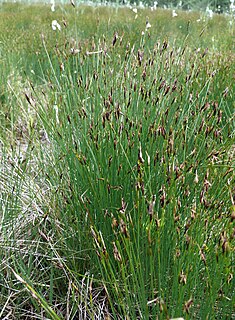
Schoenus is a genus of sedges. Plants of this genus mainly occur in Australia and Southeast Asia with some species widespread in scattered locations in Europe, Asia, Africa, and the Americas. Bogrush is a common name for these plants.

Schoenus nigricans is a species of sedge known by the common names black bog-rush and black sedge. It is native to Eurasia, parts of Africa, Australia, and southern North America, including Mexico and the southernmost United States. It grows in many types of wetlands and other moist and alkaline habitat, including marshes, springs, seeps, peat bogs, heath, and alkali flats. This perennial plant grows in low, tight clumps 20 to 70 centimeters tall, with threadlike leaves bearing wide, dark brown ligules. The inflorescence is a small, flattened cluster of dark spikelets. The fruit is an achene coated in a hard, white shell.
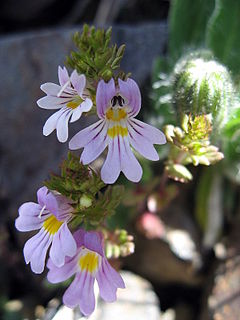
Euphrasia salisburgensis is a plant in the genus Euphrasia, in the family Orobanchaceae.
Schoenus or Schoinos was a city in ancient Boeotia, located east of Thebes. Schoenus is mentioned by Homer as part of Thersander's domain in the Catalogue of Ships in the Iliad. Schoenus is placed by Strabo upon a river of the same name in the territory of Thebes, upon the road to Anthedon, and at the distance of 50 stadia from Thebes. This river is probably the stream flowing into the lake of Hylica from the valley of Mouriki, and which near its mouth is covered with rushes. Nicander is clearly wrong, who makes the Schoenus flow into Lake Copais. Schoenus was the birthplace of the celebrated Atalanta, the daughter of Schoenus; and hence Statius gives to Schoenus the epithet of "Atalantaeus."

Schoenus quartziticus is a species of sedge endemic to the Agulhas Plain region of southern South Africa.

Schoenus compar is a species of sedge endemic to southern South Africa.
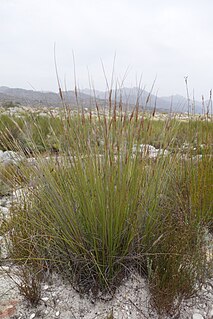
Schoenus pictus is a species of sedge endemic to the Western Cape Province of South Africa. It is a species usually found on mountain slopes.

Schoenus auritus is a species of sedge endemic to southern and eastern South Africa.

Schoenus exilis is a species of sedge endemic to the western areas of the Western Cape Province of South Africa.

Schoenus bolusii is a species of sedge endemic to the mountains of the Western Cape Province of South Africa. However, S. bolusii is not found on the Cape Peninsula.
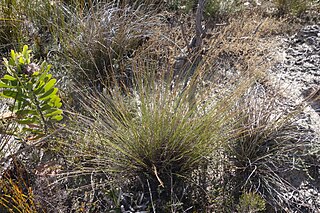
Schoenus submarginalis is a species of sedge endemic to the mountains of the Western and Eastern Cape Provinces of South Africa.
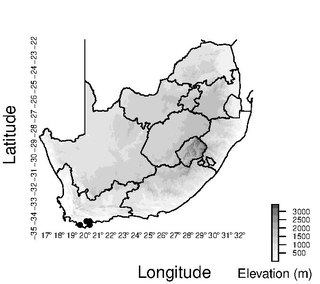
Schoenus calceolus is a species of sedge endemic to limestone-derived soils in the Agulhas Plain region of South Africa.
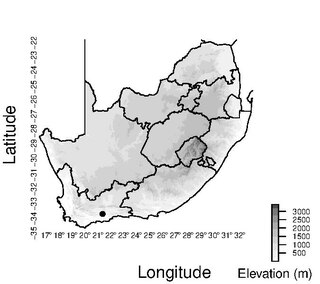
Schoenus triticoides is a species of sedge endemic to the mountains of southern South Africa.

Schoenus crassus is a species of sedge endemic to south-western South Africa.
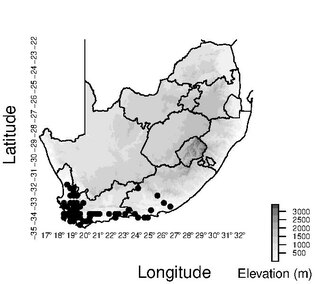
Schoenus cuspidatus is a species of sedge endemic to the Cape region of South Africa where it is found in the provinces of Western Cape and Eastern Cape.

















